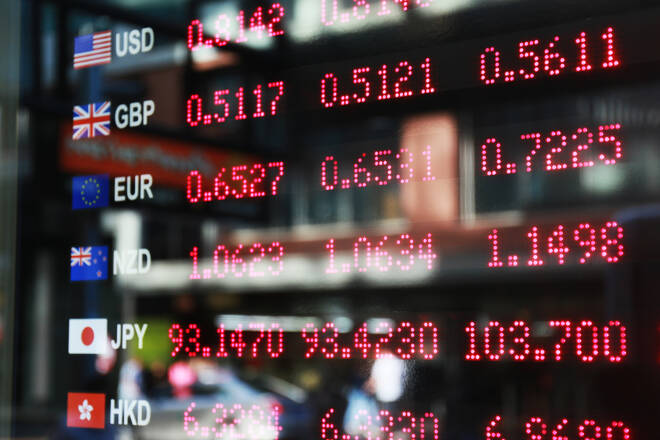Advertisement
Advertisement
Learn the Basics of Trading Currencies
Updated: Mar 27, 2019, 09:23 GMT+00:00
Intro
Learning the basics in currency trading is not complicated. Building your own strategy to make and making it work is a different story.
What is Currency Trading?
Currency trading is when a person buys and sells different types of currencies, money, that are used worldwide. Foreign Exchange, or Forex, is the more commonly used name. Anyone can trade currencies, market access is easy, however, you’re encouraged to learn everything you can before starting to help avoid unnecessary losses. You can start the learning process from sites like Forexhandel and nextmarkets and try trading demo accounts to get a feel for how it forex trading works.
What is Foreign Exchange?
The currency market or Foreign Exchange is the most liquid market in the world. It contains all the worlds money and continues to grow annually. The U.S. Dollar is the primary currency traded and it is traded against virtually every other currency on the market. Its safety and liquidity make it invaluable to traders, allowing them to enter and exit the market at will.
The OTC (over-the-counter) foreign exchange market, what you are accessing with a forex or CFD broker, has no physical location or central exchange and is usually open 24-hours per day, Sunday evening through Friday evening. Forex trading with CFD’s is a speculation on the direction an underlying currency pair like the EUR/USD (US Dollar versus the EU Euro) is going to move.
You make money by buying or selling the pair before the move begins and profit on the amount of movement that happens. For example, if you buy the EUR/USD at 1.1200 and it moves up to 1.1400 you make 0.0200. That may not sound like a lot but when you factor in the leverage provided by CFD trading it can amount to hundreds of dollars in profit.
Trading currencies can be very difficult, especially for those with no clue how to make a good trade. There are three primary sessions successful traders focus on. These include the European, Asian, and United States trading session. These sessions may overlap but the main trading is associated with the hours these markets are open (when the traders are awake, business hours).
This means that certain pairs will have more active during certain times of the day. Those who stay with pairs based on the dollar will find the most volume in the U.S. trading session and when the opposing pair’s market is open.
The Basics of Trading
A lot is the standard number of units in trading currencies. When you buy a position it will be in lots, one lot two lots, three lots or more depending on how large a trade you want to make. Each lot represents a regulated quantity of a financial instrument as set out by the exchange you are using or the regulator in charge of your jurisdiction.
Some exchanges and brokers allow micro-lots for smaller trading accounts and those with lower risk tolerance. The micro-lot is equivalent to 1,000 units of one currency. If you have an account that is financed with the use of U.S. dollars, a micro-lot signifies 1000 USD of the base currency. A mini lot is 10,000 units of your base currency and a standard lot is 100,000 units.
What are Pairs and Pips?
A currency pair is an expression of exchange between two currencies. For example the EUR/USD. There are literally hundreds of pairings, any currency can be traded against another one, you just have to find the right market or exchange.
A Pip is the smallest amount of movement among major currency pairs. It is usually tracked as the fourth significant digit after the decimal place but this is not true in some cases. The USD/JPY (Japanese Yen) only goes to two significant digits at most exchanges.
How Forex Trading Works
Currencies are traded against each other because the exchange rates are always fluctuating. If you buy one currency when it is cheap and then sell it when it is expensive you can make money. Traders watch the market using financial charts of price movement to pinpoint when they want to buy or sell. Because most forex trading is done with pairs and speculative CFDs you never really have to own the currencies you are trading.
For example, if you think the EUR/USD is going to go higher you would buy 1 lot of EUR/USD. If it moves up you can profit, each PIP will be equal to $0.10 or more depending on your leverage. If you think the EUR/USD will move lower you would sell 1 lot. If it does move lower you will profit for each pip that it falls.
So, what makes Currency Trading trendy nowadays?
Currency trading is popular for three reasons; the market is easy to access, it is challenging, and you can make a lot of money. The problem is that too many would-be traders get into trading forex without the full knowledge of the risks. Just like with any investment, it is possible to lose a lot of money. If you make a trade and the market does not move in the direction you want but in the opposite direction, you will lose money with each PIP the pair falls.
Final thought
Learning the basics in currency trading is not complicated. Building your own strategy to make and making it work is a different story. You will need a lot of patience and practice to reach your goals. There are many helpful articles and applications online that can help you develop your skills in getting ahead of the game in trading currencies.
Suggested articles:
About the Author
FX Empire editorial team consists of professional analysts with a combined experience of over 45 years in the financial markets, spanning various fields including the equity, forex, commodities, futures and cryptocurrencies markets.
Advertisement
Advertisement
Advertisement
Advertisement
Advertisement
